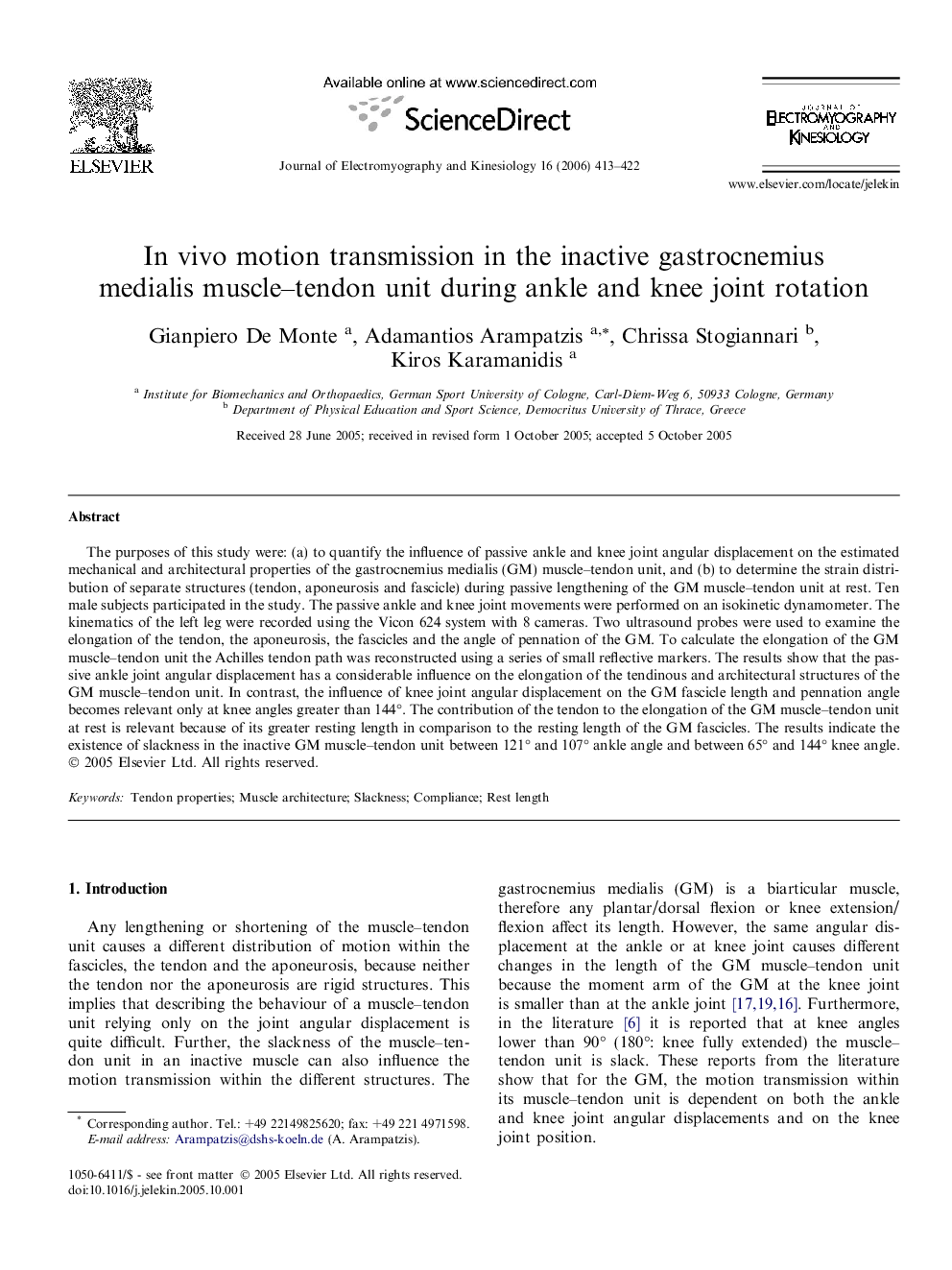| کد مقاله | کد نشریه | سال انتشار | مقاله انگلیسی | نسخه تمام متن |
|---|---|---|---|---|
| 4065604 | 1266260 | 2006 | 10 صفحه PDF | دانلود رایگان |

The purposes of this study were: (a) to quantify the influence of passive ankle and knee joint angular displacement on the estimated mechanical and architectural properties of the gastrocnemius medialis (GM) muscle–tendon unit, and (b) to determine the strain distribution of separate structures (tendon, aponeurosis and fascicle) during passive lengthening of the GM muscle–tendon unit at rest. Ten male subjects participated in the study. The passive ankle and knee joint movements were performed on an isokinetic dynamometer. The kinematics of the left leg were recorded using the Vicon 624 system with 8 cameras. Two ultrasound probes were used to examine the elongation of the tendon, the aponeurosis, the fascicles and the angle of pennation of the GM. To calculate the elongation of the GM muscle–tendon unit the Achilles tendon path was reconstructed using a series of small reflective markers. The results show that the passive ankle joint angular displacement has a considerable influence on the elongation of the tendinous and architectural structures of the GM muscle–tendon unit. In contrast, the influence of knee joint angular displacement on the GM fascicle length and pennation angle becomes relevant only at knee angles greater than 144°. The contribution of the tendon to the elongation of the GM muscle–tendon unit at rest is relevant because of its greater resting length in comparison to the resting length of the GM fascicles. The results indicate the existence of slackness in the inactive GM muscle–tendon unit between 121° and 107° ankle angle and between 65° and 144° knee angle.
Journal: Journal of Electromyography and Kinesiology - Volume 16, Issue 5, October 2006, Pages 413–422